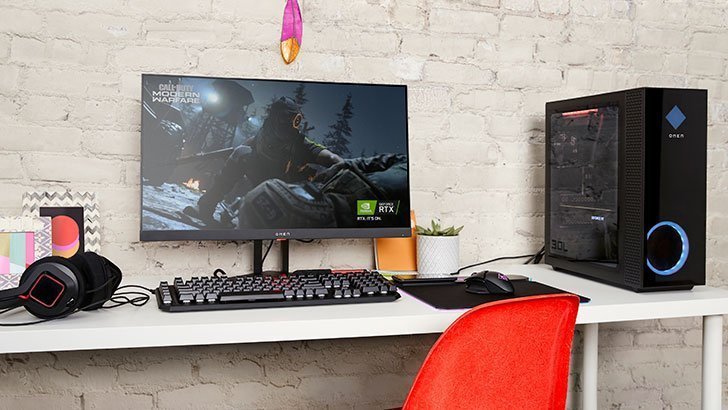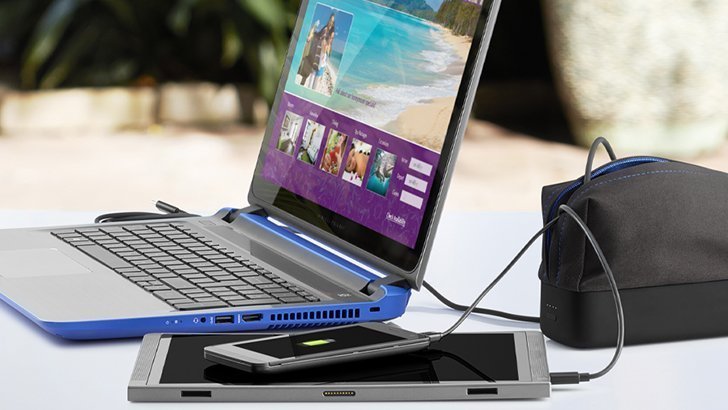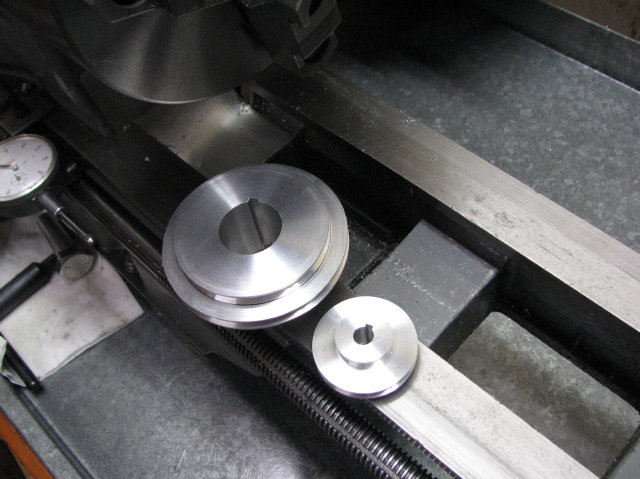
Ping Very High

How to lower ping and ultimately reduce lag in video games
What is ping? Ask any gamer, and they might say it’s the biggest bane to their gameplay. That’s because when video games lag, the signs most often point to a too-high ping.
Ping is a measure of latency, or how quick a signal is sent from and returned back to your computer. To put it in a gaming context, it’s the amount of time a game takes to recognize your gameplay. For example, when playing Zelda, you want to know right away if Link slayed his enemies, not wait for your computer to register if they’ve even crossed paths.
And while pro gamers are able to avoid high pings at all costs, perhaps even by upgrading their equipment to the latest and greatest hardware, recreational online gamers generally are left to troubleshoot their own devices. To that end, consider this your ultimate guide on how to lower ping and, ultimately, reduce lag in video games.
What affects ping?
Internet connection speed, above all else, affects ping. And for online gamers, internet connection speed is everything. Speed can also be affected by how much data a network is juggling and how many users are on that network at the same time.
To put ping in a non-gamer context, think of playing fetch with a dog. The farther we throw the stick and the rougher the terrain the dog has to take to get to it, the longer it will take them to bring it back. The amount of milliseconds — ping is measured in ms — that we’re twiddling our thumbs waiting for the dog to return with our thrown stick is called latency or, in gamer terms, lag for short.
So, when gamers are scratching their head asking, “Why am I lagging? ” The answer is often high ping. For this reason, to reduce lag, you need to reduce ping.
How to lower ping? You can do this by improving the route your internet takes to connect to gaming servers. In other words, you can help establish a better connection between your computer and gaming servers.
Why is my ping so high and is lower ping better?
Lower ping is better than high ping, because low ping means less lag. And less lag means smoother gameplay. On the flip, high ping means a longer lag. It also means you probably have a poor internet connection speed.
Remember, ping is how long it takes a device to “go fetch” data from another server. So, the less time it takes — meaning the lower the ping — the quicker your game can be played.
There are a number of reasons why ping can be high, many of which you can correct yourself. Some reasons your ping might be high include:
Routers and how updated they are, where they’re placed, and whether their firmware is up to date
Computers and whether they’re outdated,
un-optimized for gaming, or need to be cleaned
Caches on your router or
modems whether they’re full
The number of devices your network is
supporting
A game’s settings and whether they’re
over-optimized
Applications and
programs running in the background on your device
Auto-updates that go into effect
during your gameplay
You might also be wondering “Well, what is a good
ping? ” Realistically, anything below 100 ms is playable, but everyday gamers
could strive for a ping of 50 ms or lower. Professional gamers, on the other
hand, might want a ping around 20 ms or lower.
You can run a ping test on most computers, though how
to do so differs across manufacturers. Some online ping tests also exist. To
simplify, an internet speed test can also provide context to your ping rate.
At the end of the day, if your game is performing just
fine, you probably don’t need to worry about your ping. But if your game is
lagging, lowering ping is crucial to level up your gaming performance. It’s
also very doable, beginning with a few troubleshooting steps.
3 steps to improve ping and internet speed
How can you lower ping? It all begins with optimizing your internet connection speed, because this is what most often affects pings. As tempting as it may be, you might want to wait to tinker with your game settings or gaming setups until you’ve taken the following steps to improve your home’s network connection. This will help you troubleshoot whether it’s really your network connection that’s the culprit of your high ping or if it’s something directly related to your gaming setup.
Step 1: Conduct computer maintenance
Running through a computer maintenance checklist can go a long way in speeding up your device and how clearly it can communicate with a gaming router. Even dust that’s piled up overtime can cause overheating, because our computers are not receiving proper ventilation.
Another consideration: Are your ethernet cables up to date? Ethernet cables are available in categories ranging from 3 to 8, or Cat 3 to Cat 8. The higher the category, the better your internet bandwidth and transmission speed. Most households have a Cat 5 or greater ethernet cable, which suffices for gaming because it can handle internet speeds of 1, 000 Mbps or higher. Outdated cables, however, might not even be able to handle speeds higher than 100 Mbps.
Step 2: Revisit your router setup
Our routers are the mainframe of our internet connectivity and they too deserve a little TLC. Consider the following router maintenance tips:
Clear your router’s cache: A full internet cache bogs down our devices. Do a hard reset on your router to clear cookies entirely and give your device a clean slate.
Place your router in an open space: Objects and even walls can obstruct our wireless internet connections. Evaluate whether your router is in an open space and maybe reposition it to a higher spot, because signals angle downward. Also readjust the antennas.
Update your router’s firmware: Think of how our devices slow down when software or security updates are necessary. The same can be true for routers, so make sure your router’s firmware is up to date.
Step 3: Run an internet speed test
Now that your devices are up to snuff, it’s time to do an internet speed test to determine whether it’s really your internet connection that is affecting your download speed.
You can conduct an internet speed test by inputting “internet speed test” into Google. Click the “run speed test” button for a gauge on what your current download speed is. If your speed score is low — below 100 Mbps — this could be an indication that the internet may be the problem.
Keep in mind that internet speeds vary depending on the number of users that are on your network at the same time. For this reason, consider doing a few internet speed tests throughout the day to determine if your bandwidth is overwhelmed. You might also want to plug your computer directly into an ethernet cable to see how the numbers change.
9 more tips to reduce lag and fix ping
An unfortunate truth is we sometimes have to make sacrifices to improve our gameplay, including ditching Wi-Fi altogether, disconnecting other devices from your network, and even lowering the visual quality of games.
But one thing you should never sacrifice to lower ping is your video game security — even though it can be tempting, don’t disable your gaming security software or VPN to achieve a faster connection. Instead, consider the following pointers to reduce ping, listed from the least to more painstaking sacrifices.
1. Close background programs and applications
There are a lot of things fighting for our computer’s attention, programs, and applications running being one of them.
By force closing these, you’re directing your device’s attention entirely toward what’s important: your game. You’re also minimizing your internet bandwidth because there are less programs and applications nursing off of its connection. Some common programs to consider closing include Spotify, Zoom, Netflix, and even Twitch, if you’re not live-streaming yourself.
2. Temporarily disable updates
Enabling automatic updates for software and applications is a great way to stay on top of your cybersecurity and ensure your devices are running optimally. Still, these updates can require a lot of your computer’s attention. For this reason, if you’re experiencing lag in video games, you might want to consider temporarily disabling your updates so that they don’t hinder your gameplay. Just be sure to enable them once you push pause for the day.
3. Use an ethernet cord
Think of an ethernet cord like an IV. It’s providing direct nourishment to your device — in the form of an internet connection — because it’s plugged directly into your device. While it’s not the most convenient of ways to lower ping, because your ethernet cord might not be near your gaming setup, you can invest in a powerline adapter to connect to an ethernet cable away from your router.
Still, using an ethernet cord most often provides a more stable internet connection versus Wi-Fi, which is being tugged and pulled by many users and devices. In the event Wi-Fi is your only option, be sure you’re on a 5GHz network versus 2. 4 GHz.
4. Remove other devices from your network
Just like those programs and applications that fight for our device’s attention, our connected devices, too, are competing for our Wi-Fi. And when you consider the rise of IoT, our routers have to juggle a lot. There’s smart TVs, computers, cell phones, smart watches, even our wireless gaming headsets. Then, multiply that by how many people live under one roof and your internet connection might simply be overwhelmed. If you’re experiencing lag in your video game, consider disconnecting these other devices or even users from your network — looking at you, roommate who’s always on TikTok.
5. Check the game server’s ping
It can sometimes be the case that it’s not you or your internet connection’s fault for a high ping — it might be the server of the game you’re playing that has a low ping. If you know the game server’s IP address, you can check this or you can visit sites such as Game Server Ping that list popular video games. If the game server’s ping is high, that could be a clear indication of why your ping is also high while gaming.
6. Select a gamer server closest to you
Another thing to consider is how close a game server is to your device, physically. The farther apart you are, the longer it takes for the two to communicate, so the higher your ping will be. Just think of how fast you can communicate with someone sitting beside you versus someone in another country. Good news is some games allow you to choose which game servers your device communicates with. If this is the case for your game, always pick the gamer server closest to your physical location.
7. Adjust your frame rate
Nowadays, gaming visuals are downright impressive. But the better the visuals — consider HD quality versus standard — the more energy it takes for your device to compute them. If you’re experiencing high ping, you may need to optimize your game’s settings, beginning with your frame rate. Worth noting is the higher your frame rate, the better quality your game’s animation will be. In your game’s settings panel, try lowering the frame rate on your game and see if it improves your gameplay.
8. Upgrade your router
The fact is equipment deteriorates over time, including the router that supports our internet connection and, in turn, affects lag in video games. Consider how old your router is and also consider upgrading it if the rest of these troubleshooting steps and tips haven’t been a success.
A newer device should give you the latest and greatest range and strongest signal for your wireless connection. Avid gamers might even want to consider springing for a gaming router that, as the name alludes, is optimized for gaming. Some include a Quality of Service feature that means the router will prioritize gaming traffic above other internet traffic.
9. Contact your internet service provider
If you can’t seem to find a solution for the lag in your video game, it might be time to call in the professionals. Contact your internet service provider for advanced troubleshooting tips to lower your ping and, finally, reduce lag in video games.
The bottom line: Lowering ping improves your online gaming performance
While people turn to video games for different reasons, with some considering gaming a form of relaxation and others determined to beat their competition, no gamer wants to experience lag — and every gamer wants to reduce lag. Thankfully, just maintaining your devices can make a big difference in your gaming experience. So, go forth, lower your ping, and higher those leaderboard rankings!

How to Lower Your Ping and Improve Online Gaming – Tech …
If you suffer lag when playing games online, you need to check your ping – here’s how to lower ping times, reduce latency and improve online gameplay
Expert tips to reduce your ping and improve your online gaming experience
By
| 16 Nov 2020
If you’re having problems with lag when playing games online – other players appearing, disappearing and constantly jumping around – it could be that your ping is too high. Ping is a measure of your connection speed or, more specifically, the latency of the connection.
Here we’ll explain ping in more depth, including how to measure it and how to lower your ping to reduce lag in online games.
What is ping?
Many people assume that a fast, responsive internet connection relies solely on a good download and upload speed, but there’s more to it than that. There’s also ping, which is essentially a reaction time. If you have a ping of 98ms (milliseconds) that’s the time it has taken for your computer (or game console) to respond to a request by another computer.
Clearly, you want as low a ping time as possible. Many online games show your ping time along with the ping of other players or servers. If your ping is around 150 (or more), you will almost certainly have problems playing the game due to the delay.
Ping doesn’t just affect games, but a long ping time is very noticeable when timing is crucial. That’s why a low ping is so important in games, especially where your position and response time (think first-person shooters or racing games) are everything.
How to measure ping speed
You can test the latency of your internet connection by using, the most popular online speed test (fun fact: Speedtest was even featured in one of the Iron Man films). Any ping below 20ms is considered to be great, while anything over 150ms could result in noticeable lag.
You might have the fastest gaming PC, but with a slow ping, your actions will take a lot longer to perform than that of your online peers, giving you a disadvantage in the online arena.
How to reduce ping
There’s no single way to reduce your ping, but instead a number of possible solutions – it’s a trial-and-error process. The first, and simplest, solution is to close all other programs and windows on your computer, making sure that there are no active downloads running in the background that might be affecting the ping.
Another issue may be that someone else in your house is running a bandwidth-hungry service, like streaming Netflix in 4K or downloading large files. The more devices that you have connected and actively using the internet connection, the higher ping you’ll have.
If you’re still getting a high ping, try and move your device nearer your router or, better still, connect your computer or console directly to your router using an Ethernet cable like the cheap Ugreen CAT7 Ethernet cable.
If it’s not practical to move your PC or console near the router, then a powerline adapter will essentially bring that direct router connection to you by running it through your home’s powerlines. We recommend the TP-Link AV1000, which is a solid balance between value and specs. This overcomes any potential issues that you may be having with Wi-Fi and poor signal strength, which may affect the latency of your internet connection.
You could also try a mesh Wi-Fi network, though since this keeps you on Wi-Fi it’s unlikely to give you as solid a speed boost as a powerline adapter.
It’s also worth checking the wires between your router and the wall box, making sure that they’re all plugged in fully – we’ve had a few experiences with cable connections becoming loose over time, and tightening them has helped the problem.
If that doesn’t work, you’ll have to try the oldest trick in the book: turn your router off and turn it back on again. Specifically, unplug the power cable from your router and wait around a minute before plugging it back in again. If your setup comprises of a separate router and modem, make sure you turn both off and not just the router.
The next step would be to consider buying a new router. If you’re just using the default one supplied by your internet service provider, you’re probably not making the most of your connection. Upgrading to a better router (especially a gaming one like the Netgear Nighthawk AX4) might help you get improved connection speeds, and potentially improve your Wi-Fi coverage too.
If you’ve followed all the above steps and you still have bad ping, the only thing left to do is call your internet service provider. Your ISP will usually be able to detect and fix any potential issues remotely and should improve speeds – and if there are no faults with your connection, maybe it’s time that you thought about switching to another provider. Or, y’know, just move house.
Author: Lewis Painter, Senior Staff Writer
Our resident Apple expert, Lewis covers everything from iPhone to AirPods, plus a range of smartphones, tablets, laptops and gaming hardware. You’ll also find him on the Tech Advisor YouTube channel.

How to Reduce Bad Ping While Gaming Online – MYMOVE
Gaming these days is wildly popular. In fact, there are around 2. 5 billion gamers in the world, utilizing games on smartphones, tablets, consoles, and PCs. This number shows that gaming is no longer about the Nintendo and Sega consoles of days gone by. Gaming now largely takes place online, thanks to advanced broadband capabilities.
However, super-fast connections are not always needed to be an online gamer, as today’s internet can be surprisingly advanced across the world. This allows gamers to participate in multiplayer games with other gamers located in almost any country. Popular gaming consoles, such as PlayStation 4, Nintendo Switch, and Xbox One, connect to servers for game play like this.
Any gamer will tell you that, in order to have a successful gaming experience, you need strong bandwidth, network availability, high data storage levels, and a comfortable gaming setup. But one important aspect of a good gaming experience — one not usually known to the average internet user — is ping.
What Is Ping?
Ping measures the length of time it takes your computer or gaming device to gather megabits of data from internet servers located anywhere in the world. Ping is the actual signal sent out to collect and transfer data from servers. This is usually a rapid process that doesn’t matter much to the average web surfer, but slow ping is a nemesis of gamers.
So why does ping matter? Put simply, it determines whether your gaming experience is fun or frustrating. The other gamers you’re playing with depend on your ping, since it determines how fast you make your move in the game, and, in turn, how fast they make theirs. If you have good ping and your opponent doesn’t, you’re more likely to walk away with the win.
Some popular video games that rely on fast internet connection include Fortnite, Overwatch, Rocket League, and League of Legends.
For instance, if you’re playing a battle royale game like Fortnite, your survival depends on your ability to attack other players and defend your own character. Slow ping could prevent you from seeing an opponent with enough time to take cover in a split second, meaning you lag a few frames behind and lose a life. And if your opponent’s ping is quicker than yours, it can be near-impossible to defend yourself against attacks.
The term “ping” was coined during World War II, when submarines sent sonar signals to other submarines as a measurement of their distance from each other. This signal made an actual “ping” noise.
So what is the ideal ping level? Ping is measured in milliseconds (ms), and the closer your ping is to zero, the better. A ping under 20 ms is very good, and just under 100 ms is average. If you experience anything above 150 ms, you will detect delays in your gaming experience, such as lagging or freezing.
How to Measure Ping
If you are experiencing lagging or slow system performance while gaming, bad ping might be the culprit. However, there are other issues that could contribute to your sluggish gaming experience.
Possible causes of bad ping:
Distance from the server
Your internet connection
The number of hops you go through. A hop is the journey a data packet takes from one router to another. The hop count refers to the number of devices a data packet passes through on its way to its destination. Each hop can increase ping.
If you’ve ruled out these causes, you can then find out how much ping you actually have, and whether it’s good or bad. A speed test will tell you all you need to know about your ping. You can find various free speed tests on the internet, including the following:
Speedtest by Ookla
SpeedSmart
Depending on the speed test you choose, you can find out your ping, latency, upload speed, and download speed for any server you want to use, no matter where in the world it is located. Here are some tips to ensure you get the most out of your speed test:
Reboot your hardware before starting the test.
Connect your device to your router via Ethernet cable. This way, you know what the best possible ping looks like for your system. Ping is generally better when you are directly connected to your internet source.
Perform speed tests at different times of the day to see if this makes a difference.
Disconnect from your router and move to different areas of your home, especially to the location in which you usually game. Perform multiple speed tests in each of these areas to see where ping is the slowest and the fastest.
Ways to Improve Ping
Strengthen Your Existing Signal
If you’re noticing high levels of ping, it might be helpful to strengthen your existing signal by switching to a wired Ethernet connection. Many gamers automatically do this to ensure they’re getting the best internet connection possible. However, this could be challenging if your gaming setup is in a different room than your internet router.
If you can’t directly connect to your router, try to be as close to your router as possible. Ideally, your router should be alongside your gaming setup. You can also try the above speed tests in different areas of your home to see where your signal is strongest, then get as close to that as you can.
Use a Powerline Adapter
A powerline adapter essentially extends Ethernet connectivity in your home without extra cables. Instead of relying on cables, a powerline adapter runs the signal through electrical wires in your home’s walls to a receiver you can connect to via Ethernet cable and, in some cases, Wi-Fi.
This is basically as good as connecting your router directly to your gaming setup and creates a much faster connection with lower ping. Powerline adapters are ideal for gamers who are renting or don’t want to drill holes in their walls in order to run wires, and many gamers swear by them.
A powerline adapter works like this: You plug one powerline adapter in near your router and connect it to your router using an Ethernet cord. Then you plug in a second powerline adapter near your gaming center and connect that to your computer or gaming console using an Ethernet cord. It’s worth noting that powerline adapters work best when plugged directly into a wall outlet instead of used with extension cords, circuit breakers, or surge protectors, as these can interrupt the signal.
So which powerline adapter should you get? Whichever one you choose, make sure it has enough mbps potential to send, receive, and download media and data you regularly use while gaming. Here are some of the best powerline adapters for gaming:
Trendnet Powerline 1200 AV2 Adapter Kit (PC Gamer)
TP-Link AV2000 Powerline Adapter (Lifewire)
Extollo PowerLine LANSocket 1500 (Lifewire)
Upgrade Your Gaming Router
If you’ve ruled out the issues above and your gaming device is still experiencing bad ping, it may be easiest to upgrade your router altogether. But with all the options out there, it’s important to do your research before committing to a purchase.
Here are the best gaming routers, according to TechRadar:
TP-Link Archer C5400 v2
Asus RT-AC86U
TP-Link Archer C5400X
Netgear Nighthawk Pro Gaming XR500
Asus RT-AC5300
Zyxel Armor Z2 AC2600
Asus RT-AC88U
Frequently Asked Questions about ping very high
Why is my ping really high?
The more devices that you have connected and actively using the internet connection, the higher ping you’ll have. … This overcomes any potential issues that you may be having with Wi-Fi and poor signal strength, which may affect the latency of your internet connection.Nov 16, 2020
Is ping bad when its high?
Ping is measured in milliseconds (ms), and the closer your ping is to zero, the better. A ping under 20 ms is very good, and just under 100 ms is average. If you experience anything above 150 ms, you will detect delays in your gaming experience, such as lagging or freezing.


